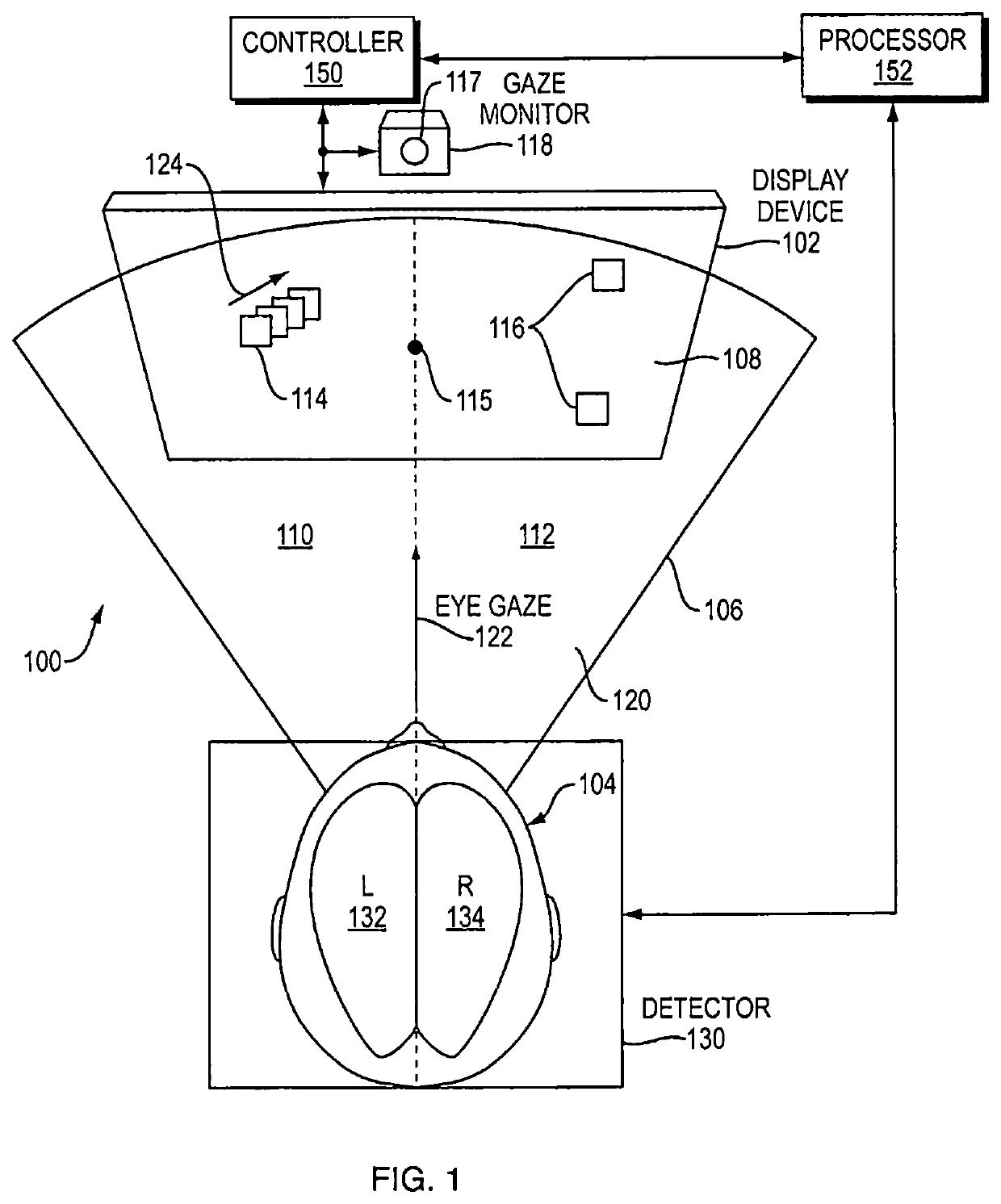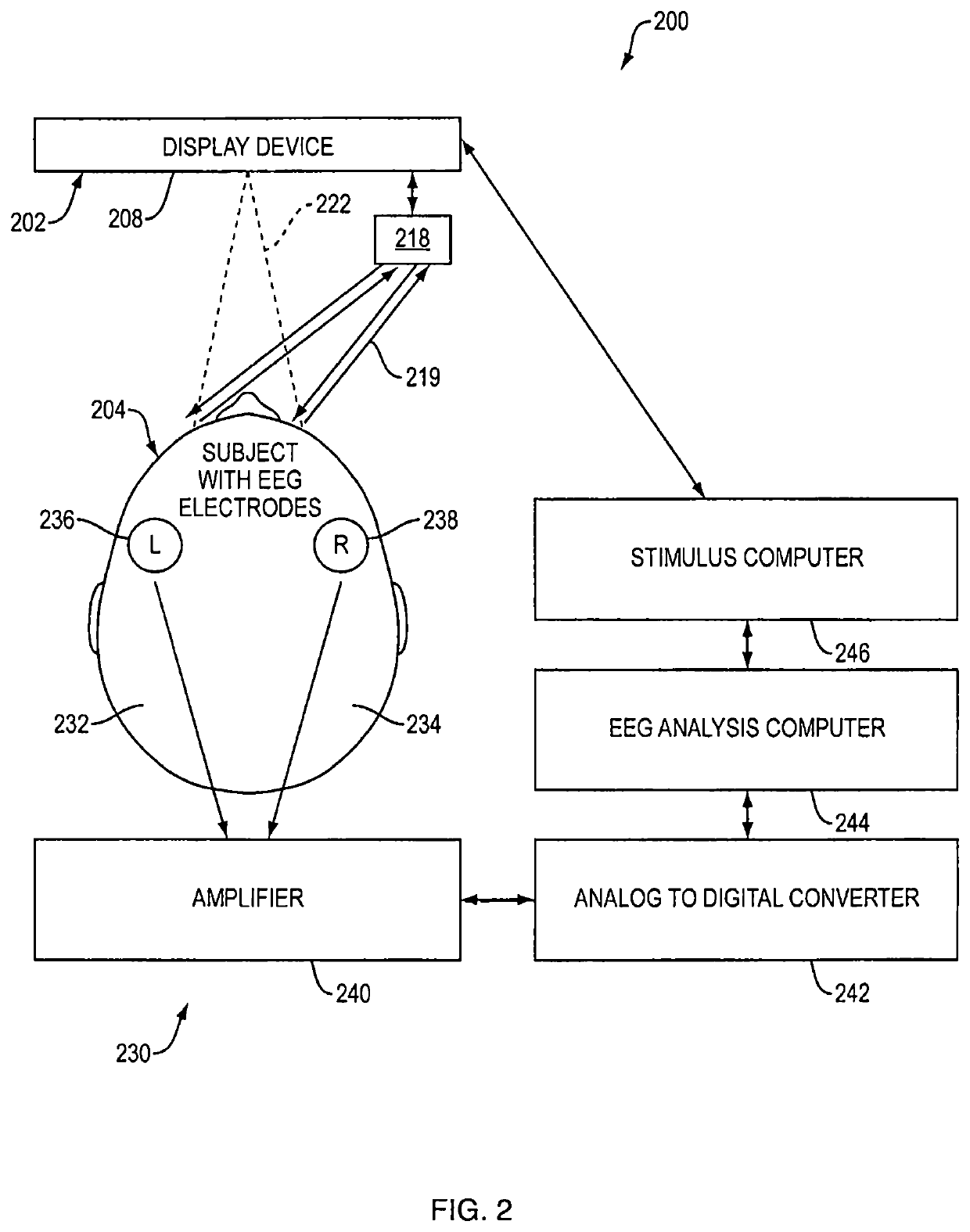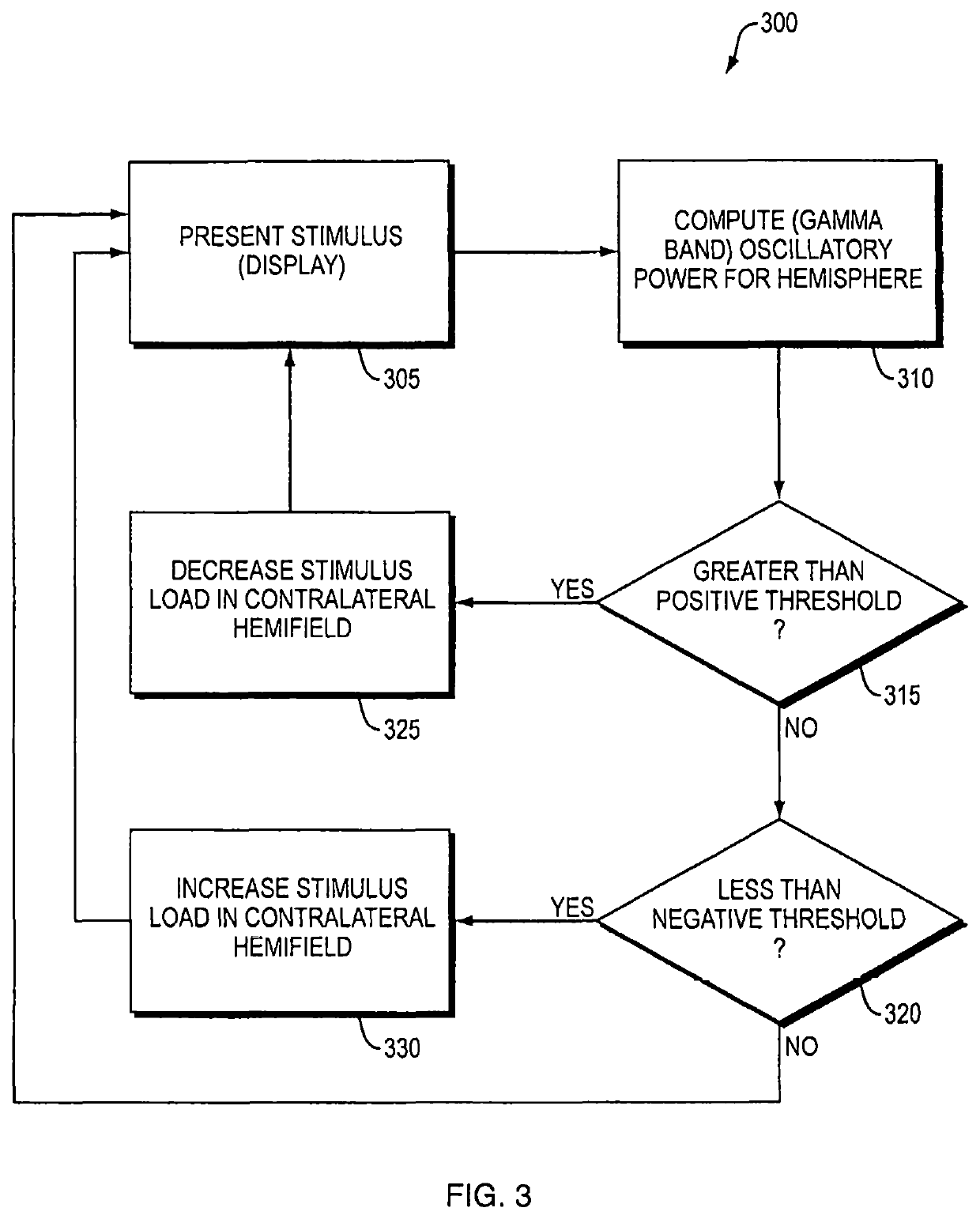Dynamic display system and method for customizing a controller in a display system
a display system and dynamic display technology, applied in the field of dynamic display systems and methods and apparatus for customizing the controller in the display system, can solve the problems of unbalanced conventional displays, excessive information, and limited information processing capacity of people using display devices, so as to improve cognitive bandwidth, improve performance in sports, and improve the effect of speed and better training
- Summary
- Abstract
- Description
- Claims
- Application Information
AI Technical Summary
Benefits of technology
Problems solved by technology
Method used
Image
Examples
example 1
ne Device
[0092]FIG. 6 illustrates an example system or kit 600 including a mobile device, e.g., smart phone, 601 and a wearable detector 630 according to an example embodiment. The smart phone device 601 includes a display device 602, e.g., a touch screen display, to display a visual stimulus 608. A built-in camera 618 can acquire images (e.g., video images) 619 of the subject 604, which can be used to identify the position and orientation of the subject's eyes to monitor eye gaze 622 of the subject. The detector 630, which is illustrated as a head mounted device, can include one or more sensors 636 to measure brain activity of the subject's left and right hemispheres 632. The detector 630 and mobile device 601 can each include a wireless communication interface to communicate, such as via Bluetooth, WiFi, or other wireless communication protocol. Each of the detector 630 and mobile device 601 can in turn communicate wirelessly with a base station (not shown). The base station can i...
example 2
isplay
[0093]FIG. 7 illustrates a display system 700 employed in a vehicle 701 according to an example embodiment. The system includes a head-up display (HUD) 702 to display information, such as a visual stimulus 708 or other visual representations. The vehicle 701 can be a passenger vehicle, a truck, a racecar, or other vehicle where monitoring of the driver's cognitive capacity may be desired. A driver (not shown) can wear a brain activity detector, such as detector 630 shown in FIG. 6 or EEG sensor caps 1000, 1020 illustrated in FIGS. 10A and 10B. A gaze monitor 718, which can be embedded in the rear view mirror as shown, is configured to monitor the driver's eye gaze. The system 700 can use the brain activity measured from the driver to adjust the information being displayed by the HUD 702. The system can use the measured brain activity and information about the monitored eye gaze to assess current level of cognitive function of the driver and, as a result of the assessment, take...
example 3
vice
[0094]FIG. 8 illustrates a system 800 for assessing a concussion or other brain injury. The system includes a football-style helmet device 801 with integrated display device 802 and brain activity detector 830. The display device 802 can display one or more stimuli 808 to subject 804 wearing the helmet device 801. As illustrated, the display device 802 can include a projector 803 to project an image onto a visor of the helmet device, thereby displaying a stimulus 808 to the subject 804. A gaze monitor 818 can be included in the helmet device to monitor the subject's eye gaze while the subject is viewing the stimulus 808 displayed. The detector 830 can include one or more sensors 836, 838 to detect brain activity of the subject's left and right hemispheres. The sensors 836, 838 can be EEG electrodes embedded in the helmet device 801. The helmet device can further include a controller 850 in communication with the display device 802 and a processor 852 in communication with the co...
PUM
 Login to View More
Login to View More Abstract
Description
Claims
Application Information
 Login to View More
Login to View More - R&D
- Intellectual Property
- Life Sciences
- Materials
- Tech Scout
- Unparalleled Data Quality
- Higher Quality Content
- 60% Fewer Hallucinations
Browse by: Latest US Patents, China's latest patents, Technical Efficacy Thesaurus, Application Domain, Technology Topic, Popular Technical Reports.
© 2025 PatSnap. All rights reserved.Legal|Privacy policy|Modern Slavery Act Transparency Statement|Sitemap|About US| Contact US: help@patsnap.com



